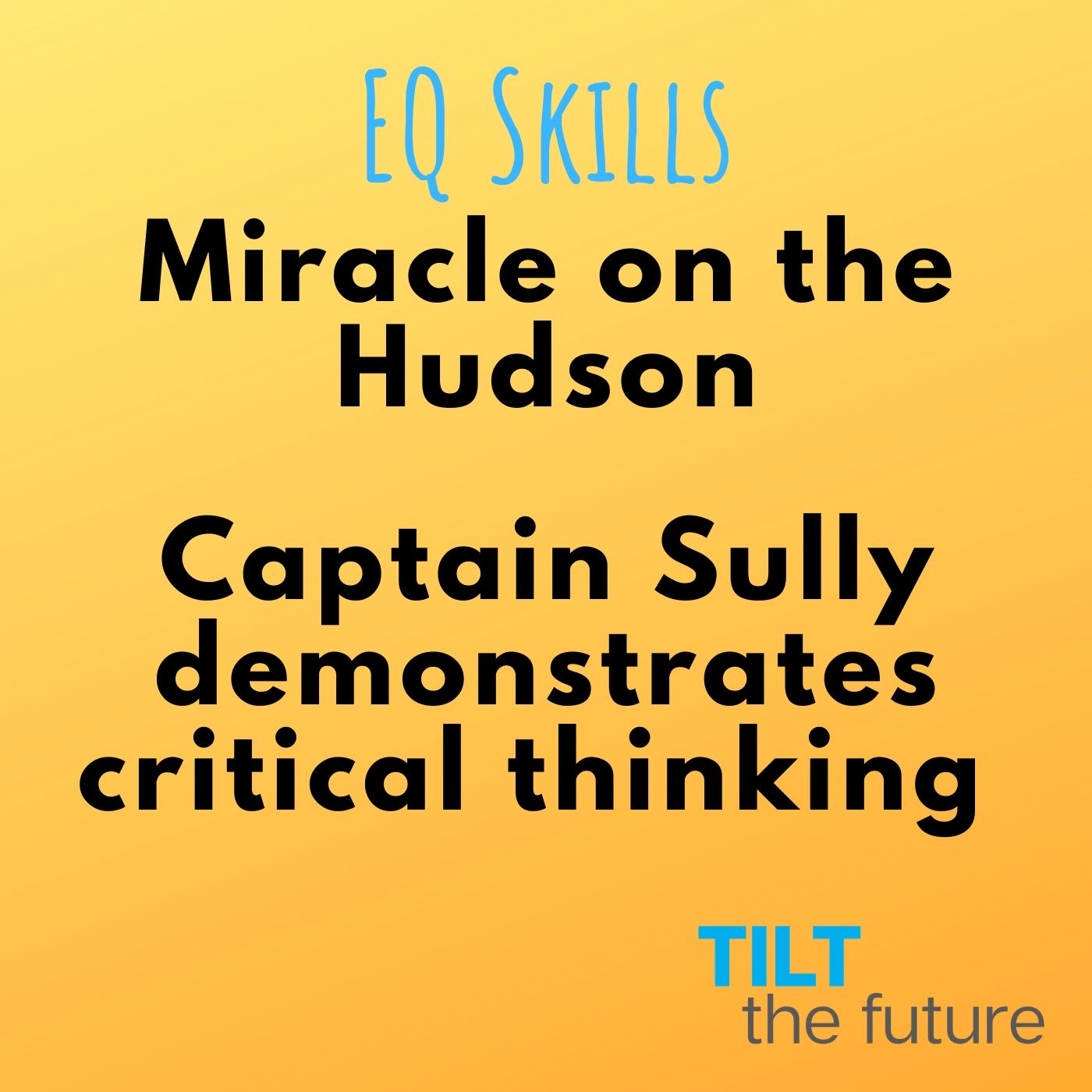
05 Nov Sully & Critical Thinking
E30: 6:11 min listen, 3 min read
Sully
Do you remember when Captain Sully landed US1549 in the Hudson? I recall watching footage of the passengers, each with their bright yellow lifejackets, gingerly walking out on the wings of the plane as it hovered on the surface of a cold river in January, with local tug boats and ferries making a bee-line to rescue them. Not a single life of the 155 people on board was lost that day. And the credit goes to the quick thinking of Captain Sully.
The problems start when the flight path of a flock of Canadian geese cross that of US1549 in the minutes after it took off from New York’s La Guardia airport. Both engines were severely damaged and the plane started losing altitude. Captain Chesley Sullenberger III quickly evaluated the situation, assessed the risk, weighed the options and then took the decision to land the plane in the Hudson River.
This was not your average take-off. It was not your normal landing. It was a set of uncommon conditions that happened. And we watched as the crew, led by their captain, showed tremendous discipline and creativity in response. (Click on the links above for photos)
Hollywood scripts
As humans, we are drawn to tales of such human courage and creativity. They become the stuff of Hollywood scripts. Only some are not fiction.
Like
- 3 stranded astronauts and a world working together to bring Apollo 13 back to earth safely.
- William Kamkawamba in The Boy who harnessed the Wind.
As we watch, we are drawn into the story.
First comes the crisis – the situation that causes us to depart from our normal routine.
We engage in the obtuse connections that are evaluated, run the highs and lows of the various ideas contemplated that fail and are left on the floor.
And then finally, we have that moment of triumph.
Critical Thinking
Welcome. These are some high profile examples of a very special emotional quotient or EQ skill called critical thinking.
Watching movies such as Apollo 13, Sully or The Martian, you would be forgiven for thinking that critical thinking is very rare, and reserved for a special band of people.
But in fact, it happens all around us, every day.
So, let us look for some more frequent examples. I was going to use the word common, but there is nothing common about critical thinking because at its core it implies a resolution to an unforeseen aggregation of circumstances.
Everyday examples
- A simpler one could be the decisions made by a paramedic in an ambulance.
- Your hairdresser giving you a fresh look for a new season.
- The way you masterfully created an omelet for dinner from the leftovers in the fridge.
These are all examples of critical thinking. Because they share a consistent set of skills. They involve:
- Being systematic in the way the problem is approached
- Linking ideas
- Categorizing between options
- Being able to create test cases and quickly evaluate them
- Identifying errors in reason
- Being reflective
- Taking action
Next steps
After reading these examples what did you think?
- How can you nurture your own critical thinking skills?
- Notice some examples in the people around you
- Comment and credit them with their innovative approach, so they realize the value and importance of critical thinking
Millennials, Gen Z, parents, educators or employers, – read / listen to the next Episode 31 to discover why employers are searching for this EQ skill, and why it is important that we nurture and recognize it.
Related episodes in the Critical Thinking EQ series:
- E31: Employers are searching for this EQ skill
- E32: ‘Think outside the box‘ step 1
If you found this information valuable, please share it with others, engage in the discussion on this site or on LinkedIn, and let us know by rating, commenting & following the podcast.



No Comments